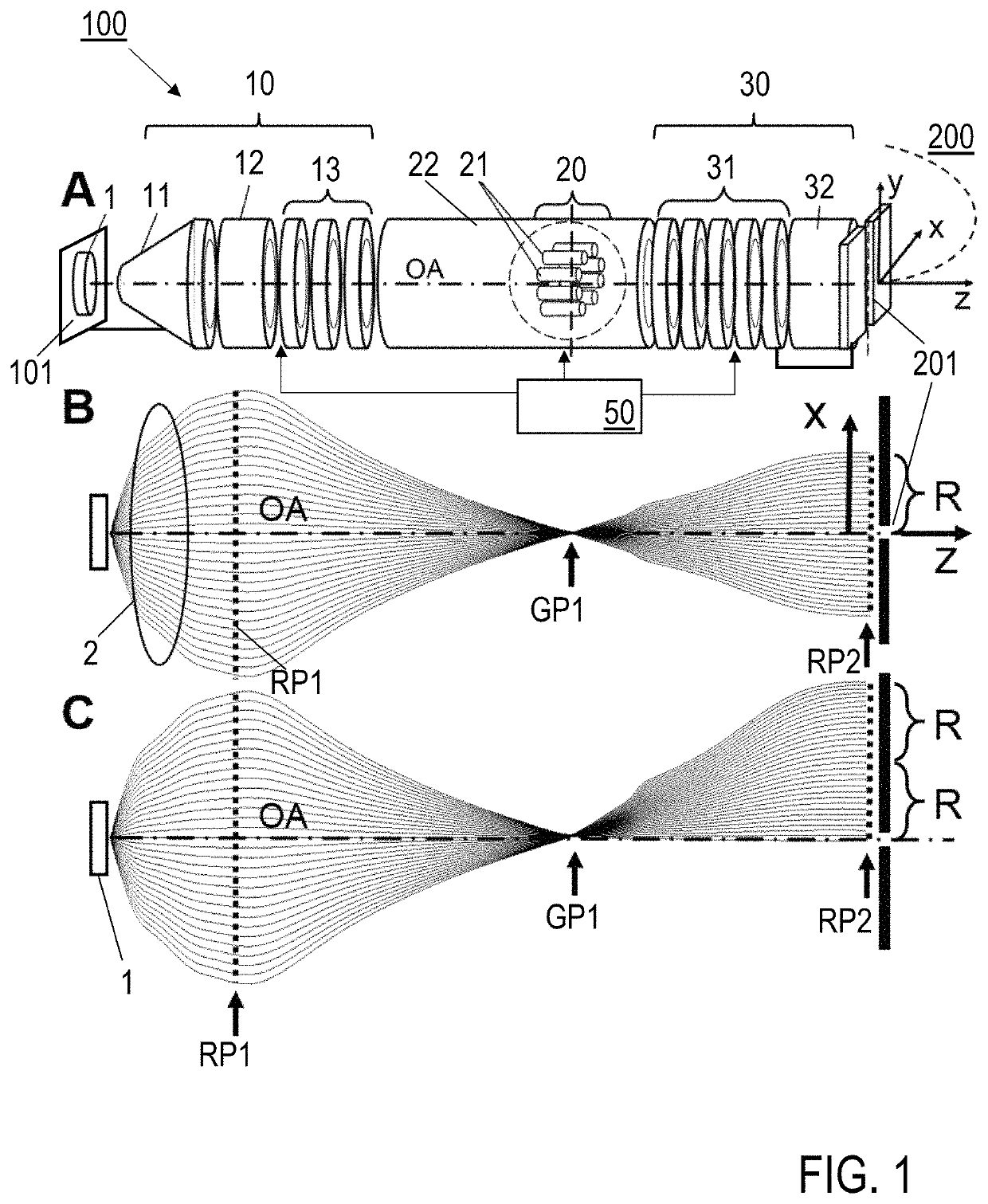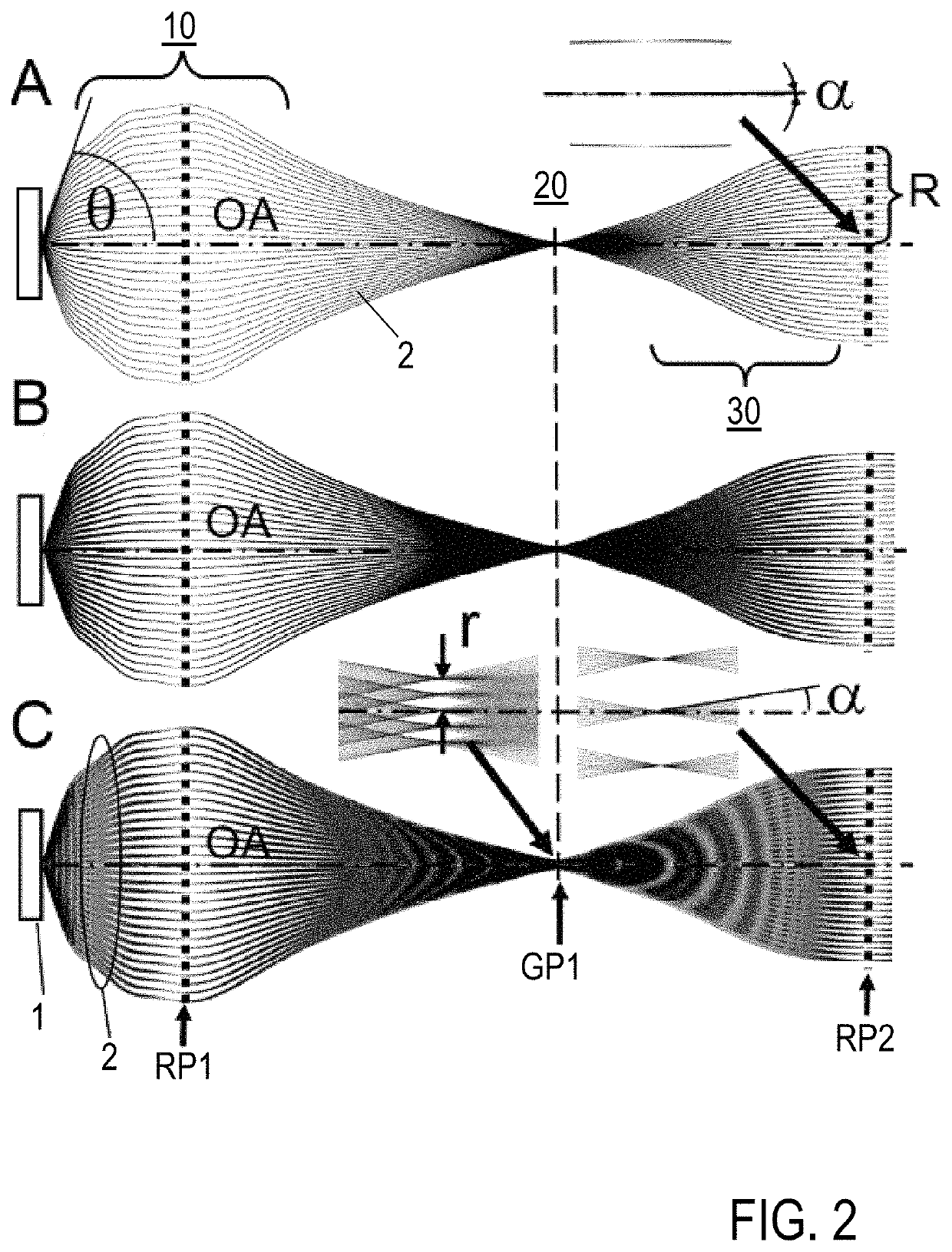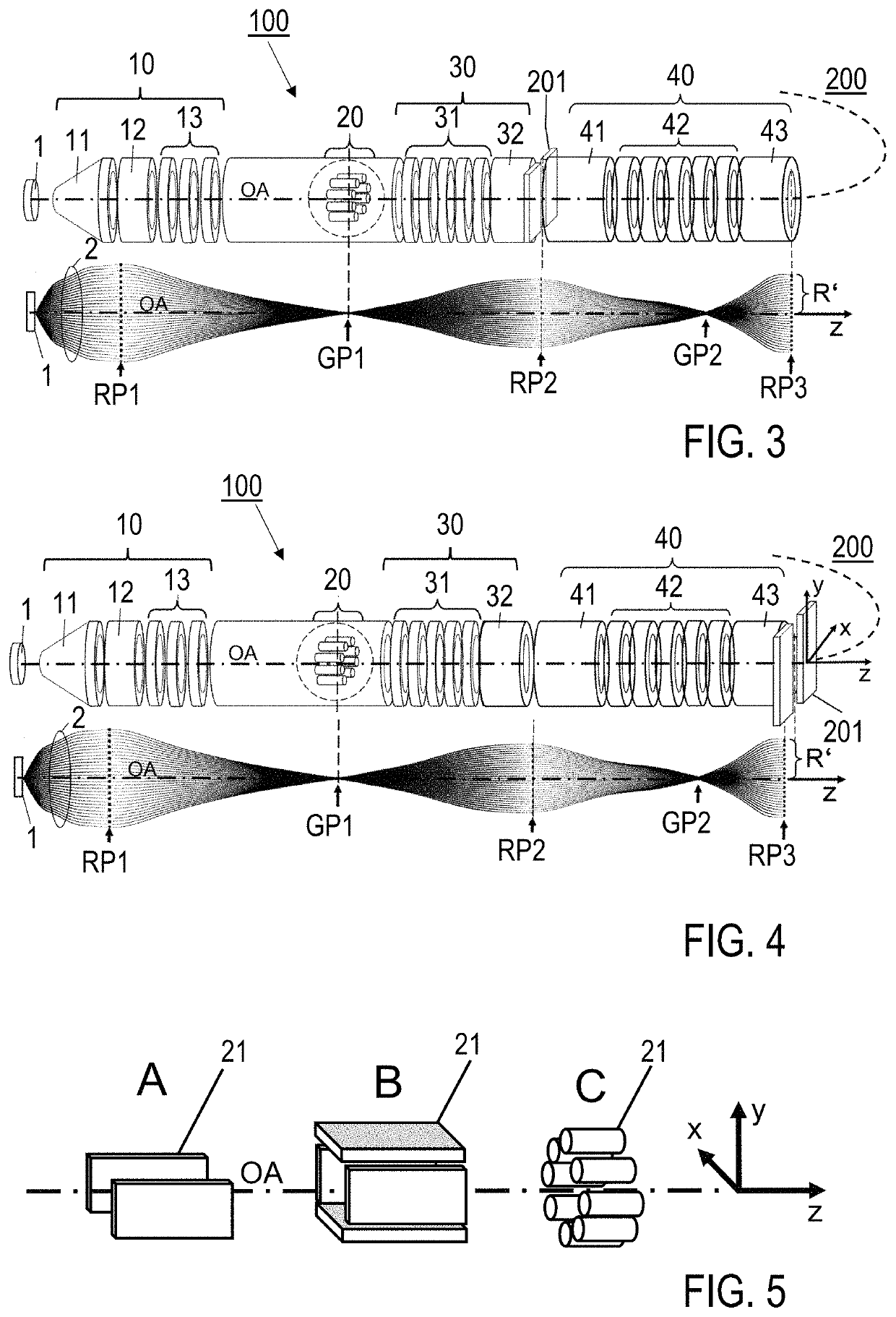Device and method for electron transfer from a sample to an energy analyzer and electron spectrometer device
a technology of electron spectrometer and energy analyzer, which is applied in the field of electron imaging apparatus and electron transfer method, can solve the problems of electron beam entering the energy analyzer with a marked divergence, imaging errors in the energy analyzer, and within relatively limited angle ranges, so as to enhance the efficiency of the energy analyzer, reduce aberration in the electron-optical system, and increase the electron angular range
- Summary
- Abstract
- Description
- Claims
- Application Information
AI Technical Summary
Benefits of technology
Problems solved by technology
Method used
Image
Examples
Embodiment Construction
[0064]The invention is described below with exemplary reference to an electron imaging apparatus in combination with a hemispherical analyzer. The invention is not limited to the use of the hemispherical analyzer but is also executable with other types of energy analyzer apparatuses. Details of the excitation of a sample and recording of energy distributions of the electrons emitted from a sample with the hemispherical analyzer are not described, since these are known per se from conventional techniques. The illustrations of the electron-optical components in the drawings are schematic illustrations. Details such as e.g. the arrangement of the electron-optical components in an evacuated space or the formation of electron-optical lenses from spaced lens elements, are not shown. In general, e.g. electron-optical lenses and the associated control circuits can be the same as those essentially known from conventional transfer optics.
[0065]The Figures are described with reference to the r...
PUM
 Login to View More
Login to View More Abstract
Description
Claims
Application Information
 Login to View More
Login to View More - R&D
- Intellectual Property
- Life Sciences
- Materials
- Tech Scout
- Unparalleled Data Quality
- Higher Quality Content
- 60% Fewer Hallucinations
Browse by: Latest US Patents, China's latest patents, Technical Efficacy Thesaurus, Application Domain, Technology Topic, Popular Technical Reports.
© 2025 PatSnap. All rights reserved.Legal|Privacy policy|Modern Slavery Act Transparency Statement|Sitemap|About US| Contact US: help@patsnap.com



